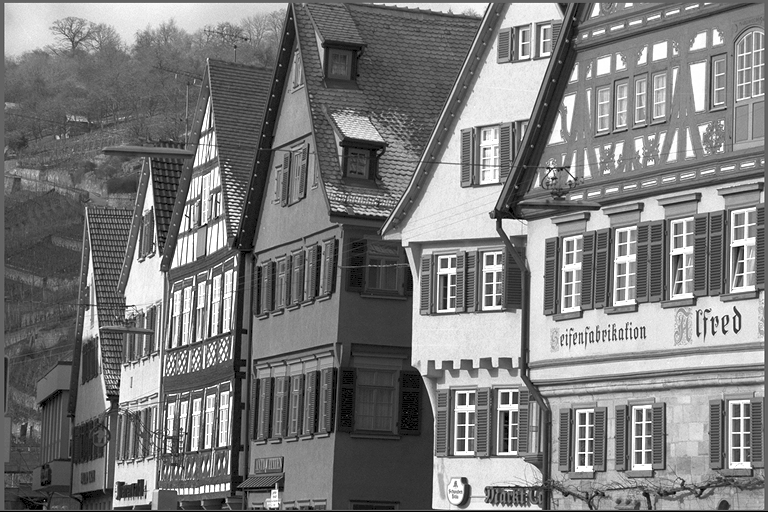Overview
Template matching is a method for finding the best matched location of a template image inside a larger image. We use the normalized cross-corrleation to compute the best match.
The following is an example showing a source image on the left with the template image in the middle. The matched score of output image is shown in the right.
| Input | Template | Output score converted to U8 |
|---|---|---|
 |  |  |
Implementation
The algorithm computes the normalized cross correlation (score) for every possible location of the template inside the source image. The location with the highest score is chosen as the best matching location between source and template image.
The cross correlation is calculated as follows:
\begin{align*} R(x, y) &= \frac { \sum_{x\prime, y\prime}( (T(x\prime, y\prime) - I(x+x\prime, y+y\prime)) \cdot M(x\prime, y\prime))^2 } { \sqrt{ \sum_{x\prime, y\prime} (T(x\prime, y\prime) \cdot M(x\prime, y\prime))^2 \cdot \sum_{x\prime, y\prime} (I(x+x\prime, y+y\prime) \cdot M(x\prime, y\prime))^2} } \end{align*}
where:
\(T(x\prime, y\prime)\) refers to the template image.
\(I(x+x\prime, y+y\prime)\) refers to the source image.
\(M(x\prime, y\prime)\) refers to the mask.
\(x\prime\) and \(y\prime\) are the pixel coordinates inside the template image.
If the source image has a resolution W \(\times\) H and template image w \(\times\) h, then the output image has a resolution (W - w + 1) \(\times\) (H - h + 1). If the template exceeds a size of 400 pixels, the convolution will be computed in Fourier space, otherwise in original space.
C API functions
For list of limitations, constraints and backends that implements the algorithm, consult reference documentation of the following functions:
| Function | Description |
|---|---|
| vpiCreateTemplateMatching | Creates payload for vpiSubmitTemplateMatching. |
| vpiTemplateMatchingSetSourceImage | Set the source image. |
| vpiTemplateMatchingSetTemplateImage | Set the template image. |
| vpiSubmitTemplateMatching | Runs the template matching algorithm with provided template. |
- Attention
- This algorithm requires that the below libraries be to be installed in the system:
- libnppc.so.11
- libnppial.so.11
- libnppidei.so.11
- libnppist.so.11
Usage
Language:- Import VPI module import vpi
- Match the template image in the input image by using CUDA backend. It's using the normalized cross-correlation. with vpi.Backend.CUDA:output = vpi.templateMatching(input, templ)
- Initialization phase
- Include the header that defines the template matching function. #include <vpi/algo/TemplateMatching.h>Declares functions that implement the template matching algorithm.
- Define the input image object. VPIImage input = /*...*/;
- Define the template image object. VPIImage templ = /*...*/;
- Create an output image with the required size and format. int32_t srcW, srcH;vpiImageGetSize(input, &srcW, &srcH);int32_t templW, templH;vpiImageGetSize(templ, &templW, &templH);VPIImage output;vpiImageCreate(srcW - templW + 1, srcH - templH + 1, VPI_IMAGE_FORMAT_F32, 0, &output);#define VPI_IMAGE_FORMAT_F32Single plane with one 32-bit floating point channel.Definition: ImageFormat.h:136VPIStatus vpiImageCreate(int32_t width, int32_t height, VPIImageFormat fmt, uint64_t flags, VPIImage *img)Create an empty image instance with the specified flags.VPIStatus vpiImageGetSize(VPIImage img, int32_t *width, int32_t *height)Get the image dimensions in pixels.
- Create the stream where the algorithm will be submitted for execution. VPIStream stream;vpiStreamCreate(0, &stream);VPIStatus vpiStreamCreate(uint64_t flags, VPIStream *stream)Create a stream instance.
- Create the payload that will contain all temporary buffers needed for processing. It'll be created on the CUDA backend. VPIPayload payload;vpiCreateTemplateMatching(VPI_BACKEND_CUDA, srcW, srcH, &payload);VPIStatus vpiCreateTemplateMatching(uint64_t backends, int32_t imageWidth, int32_t imageHeight, VPIPayload *payload)Creates payload for vpiSubmitTemplateMatching.
- Include the header that defines the template matching function.
- Processing phase
- Set the input image. vpiTemplateMatchingSetSourceImage(stream, VPI_BACKEND_CUDA, payload, input);VPIStatus vpiTemplateMatchingSetSourceImage(VPIStream stream, uint64_t backend, VPIPayload payload, VPIImage srcImage)Set the source image.
- Set the template image. vpiTemplateMatchingSetTemplateImage(stream, VPI_BACKEND_CUDA, payload, templ, NULL);VPIStatus vpiTemplateMatchingSetTemplateImage(VPIStream stream, uint64_t backend, VPIPayload payload, VPIImage templImage, VPIImage mask)Set the template image.
- Submit the algorithm to the stream along with all parameters. It'll be executed by the CUDA algorithm. VPIStatus vpiSubmitTemplateMatching(VPIStream stream, uint64_t backend, VPIPayload payload, VPIImage output, VPITemplateMatchingMethod method)Runs the template matching algorithm with provided template.
- Optionally, wait until the processing is done. vpiStreamSync(stream);VPIStatus vpiStreamSync(VPIStream stream)Blocks the calling thread until all submitted commands in this stream queue are done (queue is empty)...
- Set the input image.
- Cleanup phase
- Free resources held by the stream and the input and output images. vpiStreamDestroy(stream);vpiImageDestroy(input);vpiImageDestroy(templ);vpiImageDestroy(output);void vpiStreamDestroy(VPIStream stream)Destroy a stream instance and deallocate all HW resources.
- Free resources held by the stream and the input and output images.
Consult the Template Matching for a complete example.
For more information, see Template Matching Algorithm in the "C API Reference" section of VPI - Vision Programming Interface.
Performance
For information on how to use the performance table below, see Algorithm Performance Tables.
Before comparing measurements, consult Comparing Algorithm Elapsed Times.
For further information on how performance was benchmarked, see Performance Benchmark.
References
- Briechle, K., & Hanebeck, U. D. (2001, March). Template matching using fast normalized cross correlation. In Optical Pattern Recognition XII (Vol. 4387, pp. 95-102). SPIE.
- Chen, C. S., Huang, C. L., Yeh, C. W., & Chang, W. C. (2016). An accelerating CPU based correlation-based image alignment for real-time automatic optical inspection. Computers & Electrical Engineering, 49, 207-220.